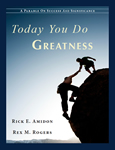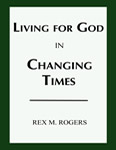I love to read Westerns. Since at least the 8th Grade I’ve read hundreds of them, along with a mountain of other books. Through the mind and pen of Louis L’Amour and a long list of other authors I’ve reveled in the glorious history of the exploration and settling of the western frontier.
But the story of the exploration and settling of the West is also the story of the subjugation of the American Indian.
It’s like there’s two sides to the story. One is uplifting: rugged individualism, heroic figures, courage, risk, sacrifice, unspoiled natural wonders, “Go West young man, go West,” horses, guns, endless buffalo herds, Indian culture, wagon trains, Conestoga Wagons, trains, cowboys, cattle drives, gunslingers, Texas Rangers, the Cavalry, hope of a better tomorrow, and much else that went directly into the formation of the American character.
Then there’s the other side: cultural imperialism, racism, savages, village massacres, broken treaties, lies, dishonest Indian agents, spoiled meat and diseased blankets, land theft, “the only good Injun is a dead Injun,” might makes right, trails of tears, genocidal military orders, cultural assimilation-qua-destruction in Indian boarding schools, reservations, end of a people.
Not all White Eyes hated or were involved in killing Indians. Not all Indians hated or were responsible for killing Whites. There was wrong, evil, and brutality on both sides. Not all treaties were negotiated in bad faith, but most were, and even those established with good motives were eventually ignored. There were compassionate, gifted leaders on both sides, and there were ruthless killers in both camps. It’s a complicated history.
It’s real history, so it’s no wonder a checkered picture emerges in fiction too. But the sad story of the Native American taints an otherwise glorious era.
Most Western fiction writers don’t write with recognizable racism. But the time frame invites it.
Edgar Rice Burroughs’s Tarzan books are similar. Burroughs, writing in the early decades of the 20th Century, lets his worldview shine through in the jungles of central Africa. Blacks are ignorant, less than human, and fodder for the daily violence of the jungle. Yet Tarzan is one of the great characters of popular fiction, and Burroughs prescience created a superhero more than thirty years before Superman and all that came after him.
In more recent years we’ve seen some efforts to redress the story, presenting a more balanced picture or telling the story from the Indian’s point of view. Films like “Dances With Wolves” or “Geronimo: An American Legend” are two worthy cinematic examples. Authors of fiction literature, including Westerns, have made similar adjustments. Authors like James Alexander Thom, Allan W. Eckert, Elmore Leonard, and Larry McMurtry have written widely acclaimed historical fiction that takes care to present characters and culture as accurately as possible.
So in the end, reading fiction is like reading non-fiction. It’s a mixed and messy story involving both noble and ignoble aspects of human nature. I don’t always agree with the author’s or the fictional character’s values, but they make me think, and that’s part of the joy of reading.
© Rex M. Rogers – All Rights Reserved, 2010
*This blog may be reproduced in whole or in part with a full attribution statement. Contact Dr. Rogers or read more commentary on current issues and events at www.rexmrogers.com or follow Dr. Rogers at www.twitter.com/RexMRogers.


